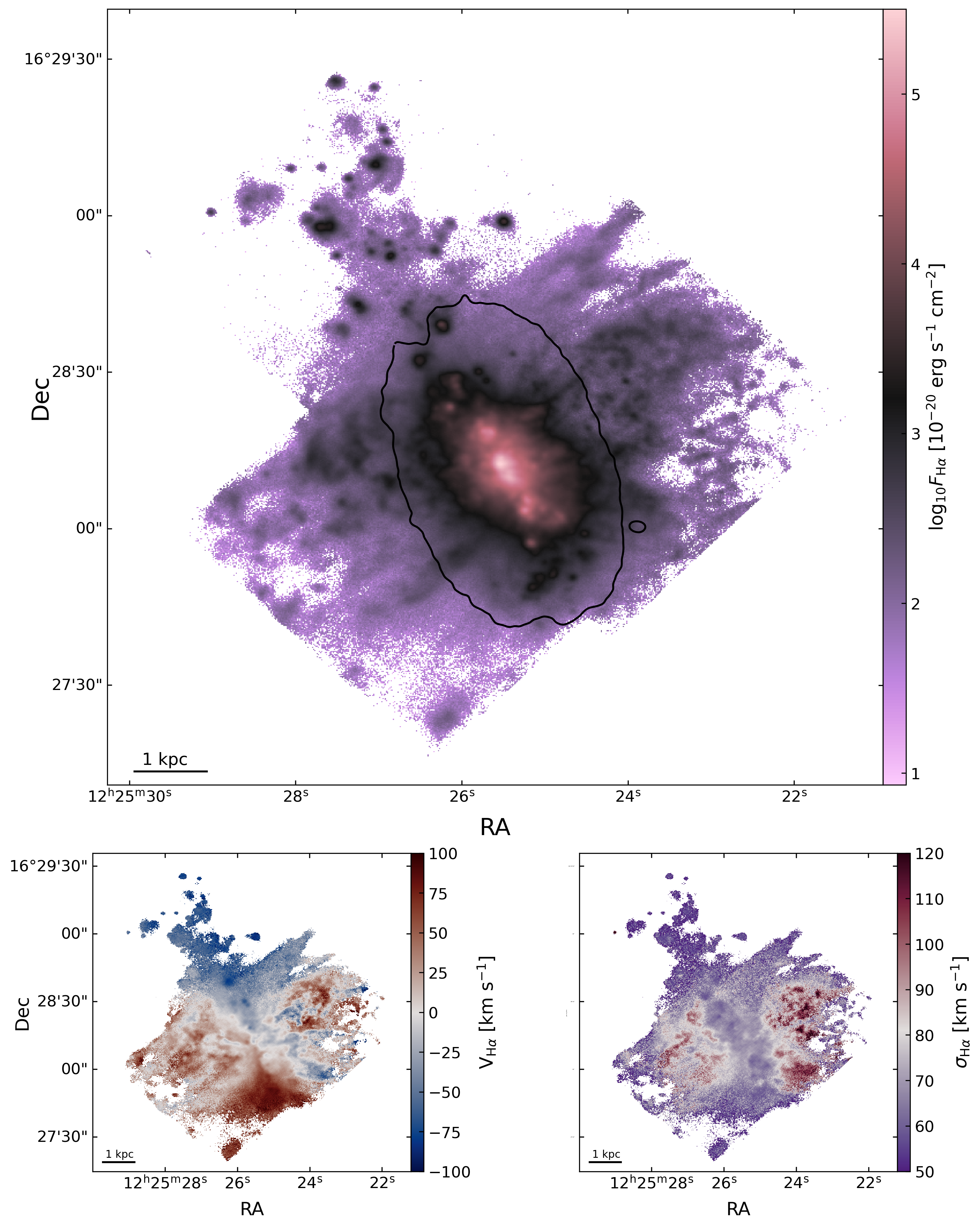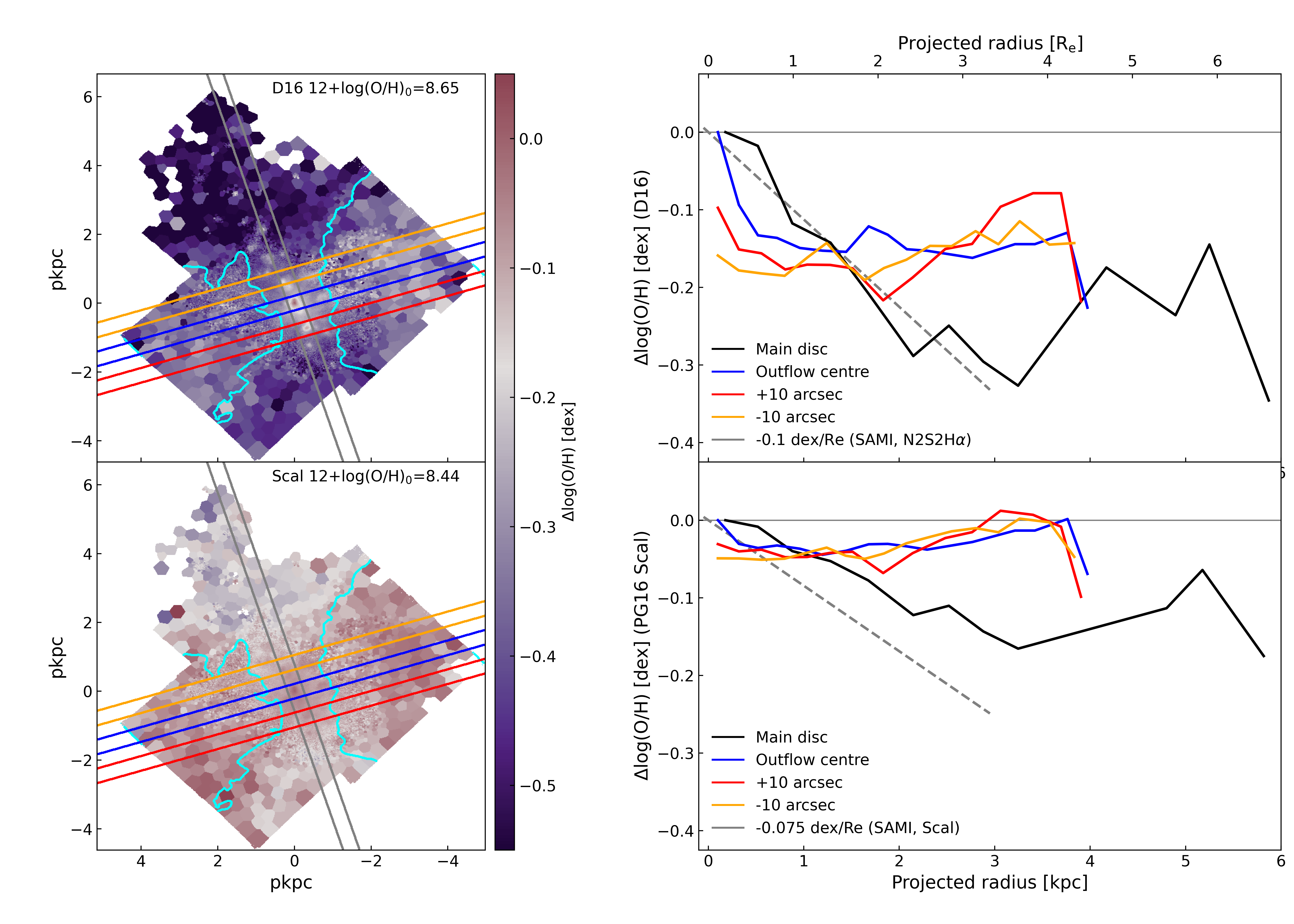A massive outflow from NGC 4383
Stellar feedback is an important regulator of the star formation cycle, and sufficiently strong feedback episodes can drive significant amounts of gas out of a galaxy. We have relatively few well-resolved examples of outflows in the local Universe, so each time we study a new one in detail we gain important constraints to galaxy evolution.
Using observations with the European Southern Observatory's VLT4/MUSE integral field spectrograph, we made the first map of the ionised gas outflow from the nearby galaxy NGC 4383 at scales of ~100 parsecs! The outflow shows a complex morphological and kinematic structure. In image to the left, the large purple-through-pink map shows the chimneys and shells associated with the outflow extending diagonally toward the top right and bottom left of the image (black regions).
Below this, on the left the motion of the gas in the line of sight deviates from what is expected for a nice rotating galaxy, signified by the patchwork red and blue colours. Similarly, the bottom right shows the as in this region has much greater turbulnce in the same regions, signified by colours white through to red, while the deep blue shows the settled parts of the main galaxy.

The outflowing gas is moving at an averge velocity of 210 kilometers per second, but despite this it will not escape the galaxy's gravity, but instead will some day return. We studied the amount of heavy elements contained in the outflowing gas, finding that it is preferentially enriched compared to the galaxy, and this is revealed by comparing the black and coloured lines in the below image.

Dr. Barbara Catinella and I discuss this research in the video below